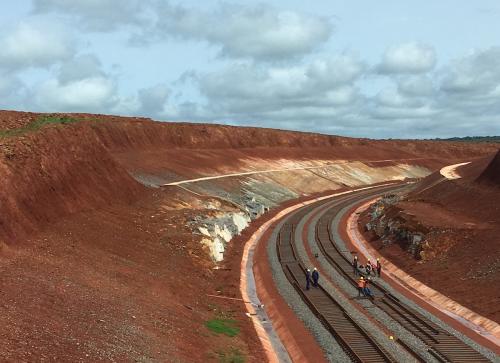It certainly seems that way, judging by recent developments. Capital increases for the World Bank, for the Asian Development Bank (AsDB), for the African Development Bank (AsDB), and for the Inter-American Development Bank (IADB) are nowhere in sight, despite their constrained lending capacities. Replenishments of their soft-loan windows have been anemic. They face divisive debates about what role emerging economies should play in their governance and how their leaders should be selected. Competitors are nipping at their heels, with the Asian Infrastructure Investment Bank (AIIB) only the most recent example. News of drastic financial restructuring of the AsDB and of protracted reorganization in the World Bank add to the questions about where the traditional Multilateral Development Banks (MDBs) are headed.
So let’s unpack what are the key challenges – and the main opportunities – that the traditional MDBs face. Based on the discussion at a recent roundtable of MDB representatives organized by International Fund for Agricultural Development (IFAD) in Rome, I see seven principal challenges:
- Progress in reducing extreme poverty and the in graduation of many low-income countries to middle-income status has reduced the rationale for aid and the apparent need for MDBs.
- The rapid growth of development finance channels means increasing competition in a crowded field of financial actors (private and non-governmental financial flows, new development finance institutions and vertical funds, and non-traditional donors).
- Traditional donors face increasing domestic pressure to channel aid resources through their bilateral aid organizations, and they show a growing preference to earmark their funding, rather than support general core financing for MDBs.
- MDBs face a dramatic growth of competing knowledge providers (international and national consulting firms, universities and think tanks).
- Inflexible governance structures limit the attractiveness of MDBs to their borrowers and to new donors. With traditional donors unwilling to give up control over vote, voice, leadership selection and lending practices, borrowers see the MDBs as unresponsive, risk averse, burdensome and costly. Emerging economy donors find MDBs unable or unwilling to absorb increased contributions with associated shifts in votes, voice and control. And since non-governmental actors cannot participate in the MDB governance structures, they do not contribute to MDB funding.
- The revival of Cold War/East-West confrontation risks politicizing the institutions’ lending practices – the World Bank and European Bank for Reconstruction and Development (EBRD) stopped lending to Russia in the wake of the sanctions imposed by the West – and reinforces incentives for setting up new institutions.
- Most MDBs find it difficult to engage directly with the private and social enterprise sectors. Due to constraints in their statutes, policies and staff capacity MDBs have not been able to provide much direct financing for private investments.
But there are also opportunities that the MDBs can capitalize on:
- Despite the challenges that MDBs face in borrowing and donor countries, overall they remain trusted partners, due to a unique combination of strengths: their traditional political neutrality, freedom from special interests and corruption, technical professionalism, long-term development perspective and hands-on program design and finance engagement. Overdue reform of MDB governance and processes and effective resistance to political pressures can increase the trust all members put in them.
- As we face increased risks of geo-political fragmentation, regionalization, and confrontation, the world will need the truly multilateral MDBs more rather than less, since they offer globally inclusive forums and instruments to help address pressing global and regional issues.
- Despite remarkable progress, poverty reduction remains a huge task. Elimination of extreme poverty ($1.25pd) by 2030 is a valid goal; but its achievement will not eliminate poverty. The billions of people living below $5pd are poor. Poverty reduction will remain a valid goal for MDBs long beyond 2030.
- The Post-2015 and climate change agendas provide a window of opportunity for MDBs to demonstrate their continued, and indeed enhanced, relevance to the global sustainable development agenda in low-income and middle-income countries. The huge role of European Investment Bank in the European Union is one demonstration of the important role MDBs can play even for the advanced countries.
- The MDBs’ unique package of services provides better value than the services offered by many competitors. Their combination of strong project preparation, supervision and finance, their attention to indebtedness constraints and sustainability requirements, their focus on policy and institutional capacity and their ability to forge multi-stakeholder partnerships provide strong and effective support. MDBs provide a steady compass in helping shift countries’ national priorities from short-term expediency to sound long-term policies and programs for sustained impact at scale.
- MDBs have shown that they play a key role in responding to economic crises, natural disasters and conflict, as demonstrated for example by their response to the global financial and economic crisis of 2008/9.
- MDBs can increase the leverage of their financial resources, as demonstrated by the recent restructuring of the AsDB, and broaden their engagement with the private sector, building on the successful experience of the International Finance Corporation and EBRD.
In sum, the creation of many copycat development banks demonstrates the remarkable strength and durability of the basic MDB model. As long as the traditional MDBs squarely face the challenges and opportunities, there’s plenty of life left in their old bones.



Commentary
Are the traditional MDBs in trouble?
May 29, 2015